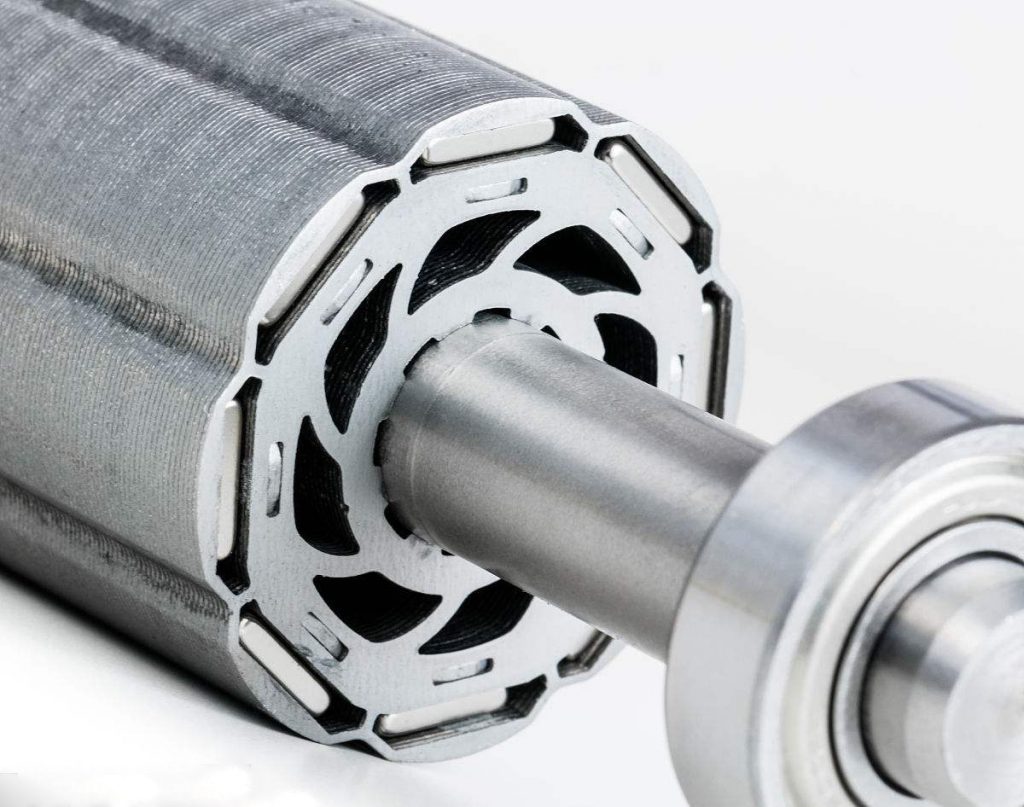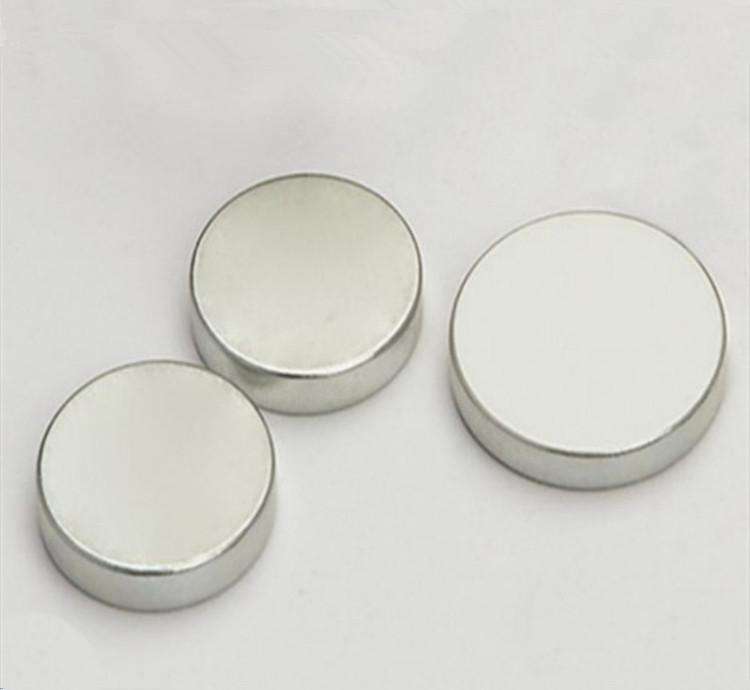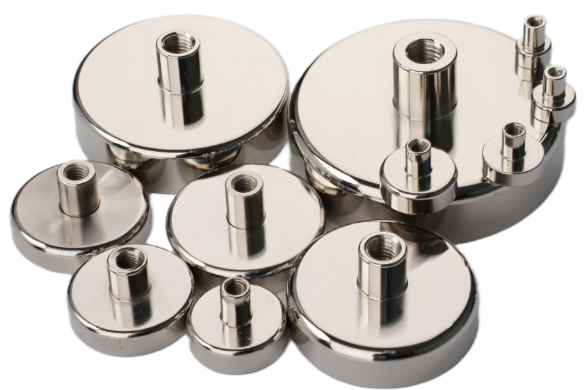How is a Neodymium Magnet Magnetized?
In recent years, with the rapid development of rare earth permanent magnet industry, the consumption of sintered Nd-Fe-B magnets in the VCM motor industry is also increasing. As the price of heavy rare earth metal dysprosium (Dy-Fe alloy) keeps rising, the production cost of sintered Nd-Fe-B motor magnets is greatly increased. At the same time, the development of the industry is restricted considerably. The rare earth dysprosium symbiotic holmium (Ho) has not been well utilized and has been left idle.
 Nd-Fe-B permanent magnets are known as the king of magnets because of their high magnetic energy product and coercivity. They are widely used in many fields, such as electronics, computers, automobiles, machinery, energy and medical devices. NdFeB magnets are divided into two types: sintered NdFeB magnets and bonded NdFeB magnets. At present, the manufacturing process of sintered NdFeB magnet is as follows: raw material preparation - ingot melting - crushing powder - pressing - sintering - aging - testing. The ingot microstructure obtained during the ingot melting process not only has an important influence on the powder preparation, orientation and sintering process, but also on the powder properties and final sintering magnetic properties. Without excellent ingot structure, it is impossible to produce high-performance sintered permanent magnet. The ingot structure is one of the key technologies that restrict the performance of the magnet.
Nd-Fe-B permanent magnets are known as the king of magnets because of their high magnetic energy product and coercivity. They are widely used in many fields, such as electronics, computers, automobiles, machinery, energy and medical devices. NdFeB magnets are divided into two types: sintered NdFeB magnets and bonded NdFeB magnets. At present, the manufacturing process of sintered NdFeB magnet is as follows: raw material preparation - ingot melting - crushing powder - pressing - sintering - aging - testing. The ingot microstructure obtained during the ingot melting process not only has an important influence on the powder preparation, orientation and sintering process, but also on the powder properties and final sintering magnetic properties. Without excellent ingot structure, it is impossible to produce high-performance sintered permanent magnet. The ingot structure is one of the key technologies that restrict the performance of the magnet.
 Composition of new sintered NdFeB magnet: Pr5.0 ~ 6.5%; Nd20 ~ 28%; Ho3 to 5%; B1.0 to 1.1%; Al0.4 ~ 0.8%; Zr0.T0.2%; Nb0.4 ~ 0.6%; Cu0.12 ~ 0.17%; Ga0.03-0.08%; Co0.4 ~ 1%; The allowance is made up of iron, and the weight percentage of Ho is 4%. The preparation method of the low-cost sintered NdFeB magnet includes the following steps: I) Raw material pretreatment: removing rust spots and impurities on the surface of each component, and breaking or cutting each component into small pieces below 35mm for batching; 2) Ingot smelting: Put the pretreated components into the vacuum smelting furnace. When the vacuum degree is less than 3 pa, start the heating device. The heating power is one-third of the maximum power. When the metal Pr and Nd begin to melt, stop pumping and heating, and fill the vacuum smelting furnace with argon gas. The melting pressure is - 0.04 MPa - 0.06 MPa and the power is adjusted to the maximum. 3) Hydrogen pulverization: nitrogen gas is injected into the crusher, and then the alloy block smelted by the ingot is put into the crusher and broken into medium-sized fragments with a size of less than 4 * 4; Firstly, nitrogen is injected into the hydrogen crushing furnace, and the above-mentioned crushed materials are loaded into the hydrogen crushing furnace, then nitrogen is replaced by hydrogen, and hydrogen crushing treatment is carried out to obtain the powder below 40 meshes. Then the powder was mixed with antioxidants, then added to the air mill under the protection of nitrogen, and the powder with a diameter of fewer than 4 microns was obtained by air mill. Then the powder was cooled in the freezer of 0-4 degrees C at a low temperature. 4) Molding: weighing step 3) the powder is filled into the cavity of the magnetic field compressor, the magnetic field of the cavity is greater than 170000e, and under the action of the magnetic field, the easy magnetization axis of the powder turns to the direction of the strong magnetic field. 5) Isostatic pressing: the blank obtained by pressing the magnetic field press through step 4 is packaged in the vacuum and loaded into the high-pressure chamber of the isostatic pressing machine. The blank holds for 15-25 seconds at the pressure of 180-200 MPa. 6) Sintering: Remove the blank packaged in the vacuum after 5) isostatic pressing operation, then put the blank box into the vacuum sintering furnace, then vacuum the sintering furnace until the vacuum degree is 0.04Pa to start heating, when the blank is degassed, the temperature rises to 1050 C_1110 C; 7) Aging: Put the sintered compact into the vacuum heating furnace, vacuum, at the pressure of 0.1 Pa, raise the temperature to 870-970 degrees C for 2-3 hours, cool to room temperature, vacuum, and then rise to 450-670 degrees C for 2-5 hours; 8) Testing: testing the magnetic parameters of the product. The ingot melting process adopted in this paper is to melt the ingot in the vacuum, strictly control the heating power and pressure, and obtain excellent ingot structure. The ingot thickness is about 10mm, which can completely inhibit the appearance of a-Fe crystals. The Nd-rich phase distributes uniformly along the grain boundary, which is beneficial to the subsequent powder preparation, orientation, and sintering, and high-performance sintering can be obtained. In sintered Nd-Fe-B magnets, low-cost rare metal Holmium is used to replace the high-cost rare metal dysprosium currently used, without affecting the magnetic properties of sintered Nd-Fe-B magnets, thereby reducing the production cost. In addition, the preparation method of sintered Nd-Fe-B magnets is simple and the ingot smelting process can obtain excellent ingot structure, which makes the sintered Nd-Fe-B magnets have good magnetic properties.
Composition of new sintered NdFeB magnet: Pr5.0 ~ 6.5%; Nd20 ~ 28%; Ho3 to 5%; B1.0 to 1.1%; Al0.4 ~ 0.8%; Zr0.T0.2%; Nb0.4 ~ 0.6%; Cu0.12 ~ 0.17%; Ga0.03-0.08%; Co0.4 ~ 1%; The allowance is made up of iron, and the weight percentage of Ho is 4%. The preparation method of the low-cost sintered NdFeB magnet includes the following steps: I) Raw material pretreatment: removing rust spots and impurities on the surface of each component, and breaking or cutting each component into small pieces below 35mm for batching; 2) Ingot smelting: Put the pretreated components into the vacuum smelting furnace. When the vacuum degree is less than 3 pa, start the heating device. The heating power is one-third of the maximum power. When the metal Pr and Nd begin to melt, stop pumping and heating, and fill the vacuum smelting furnace with argon gas. The melting pressure is - 0.04 MPa - 0.06 MPa and the power is adjusted to the maximum. 3) Hydrogen pulverization: nitrogen gas is injected into the crusher, and then the alloy block smelted by the ingot is put into the crusher and broken into medium-sized fragments with a size of less than 4 * 4; Firstly, nitrogen is injected into the hydrogen crushing furnace, and the above-mentioned crushed materials are loaded into the hydrogen crushing furnace, then nitrogen is replaced by hydrogen, and hydrogen crushing treatment is carried out to obtain the powder below 40 meshes. Then the powder was mixed with antioxidants, then added to the air mill under the protection of nitrogen, and the powder with a diameter of fewer than 4 microns was obtained by air mill. Then the powder was cooled in the freezer of 0-4 degrees C at a low temperature. 4) Molding: weighing step 3) the powder is filled into the cavity of the magnetic field compressor, the magnetic field of the cavity is greater than 170000e, and under the action of the magnetic field, the easy magnetization axis of the powder turns to the direction of the strong magnetic field. 5) Isostatic pressing: the blank obtained by pressing the magnetic field press through step 4 is packaged in the vacuum and loaded into the high-pressure chamber of the isostatic pressing machine. The blank holds for 15-25 seconds at the pressure of 180-200 MPa. 6) Sintering: Remove the blank packaged in the vacuum after 5) isostatic pressing operation, then put the blank box into the vacuum sintering furnace, then vacuum the sintering furnace until the vacuum degree is 0.04Pa to start heating, when the blank is degassed, the temperature rises to 1050 C_1110 C; 7) Aging: Put the sintered compact into the vacuum heating furnace, vacuum, at the pressure of 0.1 Pa, raise the temperature to 870-970 degrees C for 2-3 hours, cool to room temperature, vacuum, and then rise to 450-670 degrees C for 2-5 hours; 8) Testing: testing the magnetic parameters of the product. The ingot melting process adopted in this paper is to melt the ingot in the vacuum, strictly control the heating power and pressure, and obtain excellent ingot structure. The ingot thickness is about 10mm, which can completely inhibit the appearance of a-Fe crystals. The Nd-rich phase distributes uniformly along the grain boundary, which is beneficial to the subsequent powder preparation, orientation, and sintering, and high-performance sintering can be obtained. In sintered Nd-Fe-B magnets, low-cost rare metal Holmium is used to replace the high-cost rare metal dysprosium currently used, without affecting the magnetic properties of sintered Nd-Fe-B magnets, thereby reducing the production cost. In addition, the preparation method of sintered Nd-Fe-B magnets is simple and the ingot smelting process can obtain excellent ingot structure, which makes the sintered Nd-Fe-B magnets have good magnetic properties.















